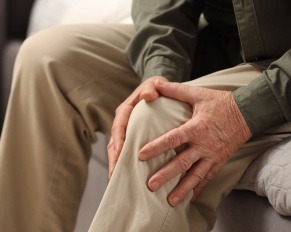Back pain is incredibly common, affecting up to 80% of adults at some point in their lives. Most of the…


Back pain is incredibly common, affecting up to 80% of adults at some point in their lives. Most of the…

Joint pain is a common complaint across all age groups, but it can be especially challenging for older adults and…
Osteophytes, more commonly referred to as bone spurs, are enlargements that grow on the edge of a bone. Bone spurs can form on any bone in your body, but most often they are outgrowths on joints. Bone spurs can also occur on other areas of the body that are attached to bones, such as on muscle, ligaments, or tendons. Most bone spurs are outgrowths that show up on knees, heels, hips, necks, lower back, wrists, toes, feet, and hands. If there’s anything good to be said about bone spurs it’s that many people who have them don’t even know it, simply because they have no symptoms—no pain, no difficulty moving, etc. Of course, there are those who do know they have bone spurs because they have associated symptoms, such as pain, loss of motion or range of motion, numbness, or tenderness. Following is information from New Jersey spinal surgeons that will help to further explain bone spurs, their symptoms, causes, and treatment options. Of you think that you may have a bone spur contact a top spinal surgeon near you ASAP!
 Of all the systems in the human body, undoubtedly the spinal column is one of the most complex. Within this complex structure is an intricate arrangement of vertebrae, discs, nerves, muscles, and ligaments. It’s that complexity that gives the spine its many functions. Of course, it’s also what makes the spine one of the most vulnerable structures in the body. And, even though spine conditions can occur to anyone at any time, especially due to injury, older folks are far more susceptible to degenerative spine conditions, which are medical conditions that develop over time. As we age, our bodies naturally have taken more of a toll as the years have worn on, making each and every one of us more susceptible to suffering conditions of the spine related to the years of stress and burden we’ve endured throughout life. Following is more information from spine specialists in Morristown and throughout the country regarding the most common of these degenerative spine conditions, including osteoarthritis, spinal stenosis, and degenerative disc disease.
Of all the systems in the human body, undoubtedly the spinal column is one of the most complex. Within this complex structure is an intricate arrangement of vertebrae, discs, nerves, muscles, and ligaments. It’s that complexity that gives the spine its many functions. Of course, it’s also what makes the spine one of the most vulnerable structures in the body. And, even though spine conditions can occur to anyone at any time, especially due to injury, older folks are far more susceptible to degenerative spine conditions, which are medical conditions that develop over time. As we age, our bodies naturally have taken more of a toll as the years have worn on, making each and every one of us more susceptible to suffering conditions of the spine related to the years of stress and burden we’ve endured throughout life. Following is more information from spine specialists in Morristown and throughout the country regarding the most common of these degenerative spine conditions, including osteoarthritis, spinal stenosis, and degenerative disc disease.